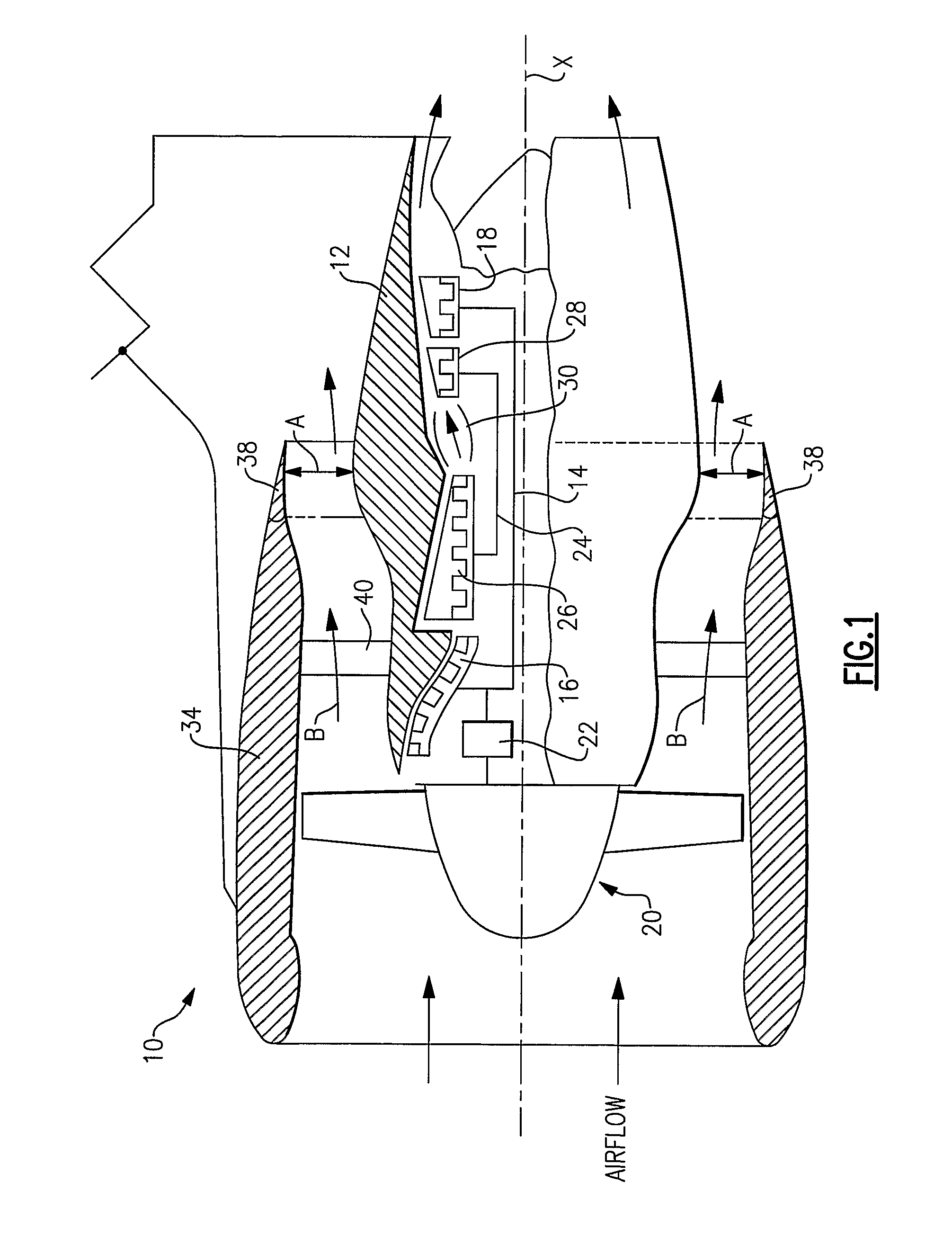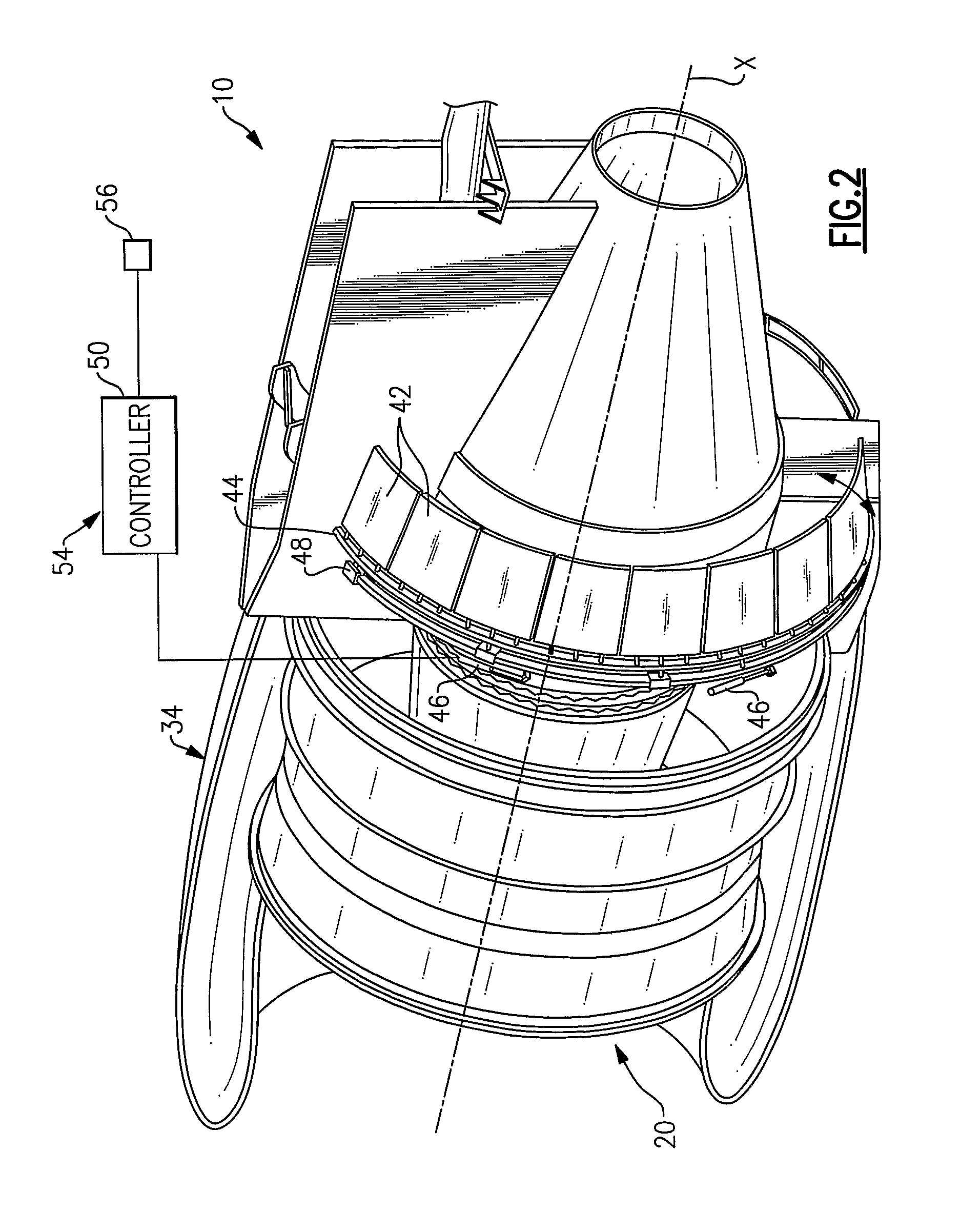Variable area nozzle assisted noise control of a gas turbine engine
a gas turbine engine and variable area technology, applied in the direction of machines/engines, liquid fuel engines, mechanical equipment, etc., can solve the problems of affecting the combination of tonal and broadband components and noise directivity, and achieve the effect of reducing the overall noise level of the engine, and reducing the noise of the engin
- Summary
- Abstract
- Description
- Claims
- Application Information
AI Technical Summary
Benefits of technology
Problems solved by technology
Method used
Image
Examples
Embodiment Construction
[0012]A geared turbofan engine 10 is shown in FIG. 1. The engine 10 includes a core nacelle 12 that houses a low rotor 14 and high rotor 24. The low rotor 14 supports a low pressure compressor 16 and low pressure turbine 18. In this example, the low rotor 14 drives a fan section 20 through a gear train 22. The fan section 20 rotates about an axis X and includes a plurality of fan blades 36. The high rotor 24 rotationally supports a high pressure compressor 26 and a high pressure turbine 28. A combustor 30 is arranged between the high pressure compressor 26 and high pressure turbine 28. The low and high rotors 14, 24 rotate about the axis X, and at least a portion of the core nacelle 12 is disposed within a fan nacelle 34. As is known, the engine 10 produces noise when running.
[0013]In the examples shown, the engine 10 is a high bypass turbofan arrangement. In one example, the bypass ratio is greater than 10:1, and the fan diameter is substantially larger than the diameter of the low...
PUM
 Login to View More
Login to View More Abstract
Description
Claims
Application Information
 Login to View More
Login to View More - R&D
- Intellectual Property
- Life Sciences
- Materials
- Tech Scout
- Unparalleled Data Quality
- Higher Quality Content
- 60% Fewer Hallucinations
Browse by: Latest US Patents, China's latest patents, Technical Efficacy Thesaurus, Application Domain, Technology Topic, Popular Technical Reports.
© 2025 PatSnap. All rights reserved.Legal|Privacy policy|Modern Slavery Act Transparency Statement|Sitemap|About US| Contact US: help@patsnap.com



